Talo

Talo AI slips into your video calls like an uninvited but welcome guest who speaks every language at the table. You fire up a Zoom meeting with a client in Tokyo, and suddenly, there’s no fumbling for words or awkward pauses while you Google Translate on the side. The tool listens, processes, and pipes out natural-sounding speech in the listeners tongue, all in under three seconds. I think that’s the magic, that low latency that keeps the flow going, you know? Its not some clunky add-on, but a bot that joins the call and handles the heavy lifting so you can focus on closing the deal or whatever brought you there in the first place.
Now, lets talk nuts and bolts because that’s where Talo shines or stumbles, depending on the light. The core feature, the Single AI Bot, grabs every utterance from participants and flips it across 60 languages with what they call crystal-clear audio. I’ve seen demos where a sales rep pitches in English, and the prospect in Berlin hears it in German, tone and all intact, no robotic monotone to kill the vibe. Integrations with Google Meet, Microsoft Teams, and Zoom are dead simple, just paste the link and pick your languages, and you’re off. But heres a curveball, it also dabbles in translating pre-recorded video and audio for your blog, which caught me off guard, like finding a Swiss Army knife in your translators pocket. Useful for that quick demo clip you need dubbed fast.
Of course, no tool walks on water, and Talo has its ripples. Some users gripe about the free trial hitting a wall right when things get interesting, like after 10 or 20 minutes, nudging you toward paid tiers that start reasonable but scale with usage. Compared to something like Wordly, which leans heavy on event translations with human backups, Talo feels more nimble for everyday calls, less bloated. Or take KUDO, the enterprise beast with certified interpreters on tap, Talo keeps it AI-pure, cheaper upfront but maybe not as polished for high-stakes boardrooms where a humans nuance saves the day. And surprise, the privacy setup is rock-solid, SOC 2 and ISO 27001 compliant, no data hoarding, which is rarer than you’d think in this AI wild west.
Dig deeper into use cases, and Talo flexes for sales teams turning one rep into a global closer, or HR folks interviewing talent without the language filter fogging judgments. Picture a product manager grilling users in Seoul, translations flying live, insights pouring in unfiltered. That’s the aspirational pull, empowering you to chase markets you’d otherwise skip. Yet, it might trip on accents thick as fog or slang that doesn’t travel well, I’ve heard whispers of that in forums, where a Southern drawl turns to mush mid-sentence. Still, for most calls, it nails the 80 percent that matters most.
What about the competition head-on? JotMe edges in with 77 languages and post-meeting summaries, a nice bonus if you like recaps emailed neat, but Talo counters with tighter voice fidelity, making it feel less like you’re talking through a filter. DeepL Voice is the precision sniper for text-heavy folks, but for voice calls, Talo runs circles around it in speed. And hey, if you’re eyeing Interprefy for its hybrid human-AI mashup, Talo stands alone as the pure-play AI option that’s lighter on the wallet for small teams. The surprise here? It preserves emotional tone, so your excitement lands, not just the words, which turns dry pitches into something human again.
Folks, if you’re dipping toes into global waters, start with a call where stakes are low, test the bot on a casual chat with a colleague across time zones. Tweak the settings for your accents upfront, and watch how it adapts. You’ll find yourself booking that international demo you shelved last quarter. Just remember, its a tool, not a miracle, so pair it with your charm, and you’ll go far.
Video Overview ▶️
What are the key features? ⭐
- Single AI Bot: Handles translations for all participants in one session without multiple accounts.
- Real-Time Voice Translation: Delivers instant speech conversion in 60 languages with under three-second latency.
- Seamless Integrations: Connects directly to Google Meet, Microsoft Teams, and Zoom via link pasting.
- Privacy-First Security: Ensures no data storage with SOC 2 and ISO 27001 compliance and encryption.
- Audio Content Translation: Translates pre-recorded videos and audio for blogs in a few clicks.
Who is it for? 🤔
Examples of what you can use it for 💭
- Sales Rep: Uses real-time translation to pitch products in clients native languages during Zoom demos, closing deals faster.
- Customer Support Agent: Provides instant multilingual responses in Teams calls, resolving issues without delays.
- Marketing Manager: Streams webinars on Google Meet with automatic voice dubs in 60 languages to reach global audiences.
- Product Researcher: Conducts user interviews in Meet, capturing authentic feedback translated live for deeper insights.
- HR Recruiter: Interviews candidates in their preferred languages on Teams, reducing bias and speeding hires.
Pros & Cons ⚖️
- Low latency translations
- 60 languages supported
- Easy platform integrations
- Strong privacy features
- Accent handling varies
- Short free trial
FAQs 💬
Related tools ↙️
-
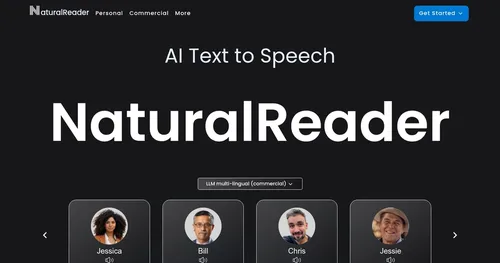 NaturalReader
Converts text and documents to speech so you can listen do your written material
NaturalReader
Converts text and documents to speech so you can listen do your written material
-
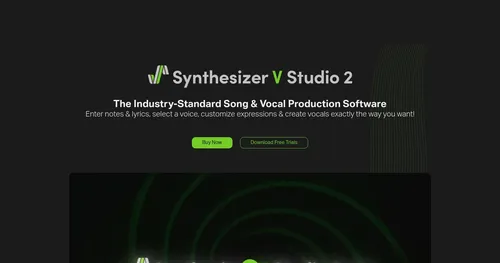 Synthesizer V
An AI-powered synthesizer that faithfully replicates the nuances of the human singing voice
Synthesizer V
An AI-powered synthesizer that faithfully replicates the nuances of the human singing voice
-
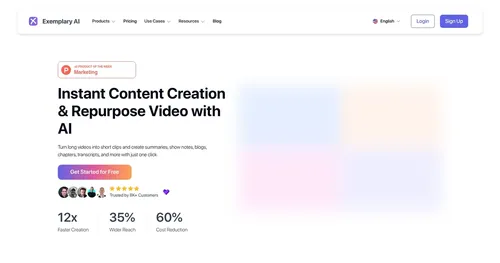 Exemplary AI
Transform lengthy videos and podcasts into captivating snippets for social media
Exemplary AI
Transform lengthy videos and podcasts into captivating snippets for social media
-
voiceMy.AI Bringing your voice to life with a dash of AI magic
-
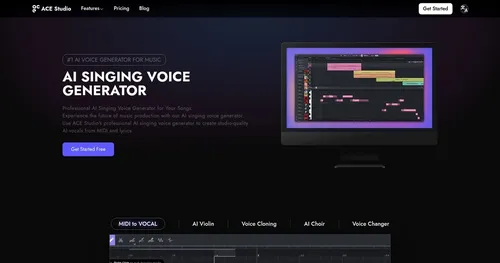 ACE Studio
Bringing the power of artificial intelligence to vocal creation
ACE Studio
Bringing the power of artificial intelligence to vocal creation
-
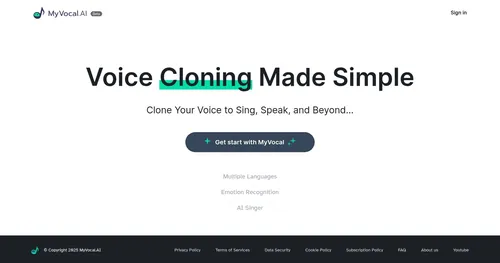 MyVocal.AI
Clone your voice and then use it for singing or content creation
MyVocal.AI
Clone your voice and then use it for singing or content creation

